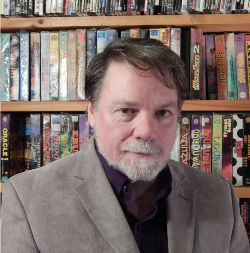
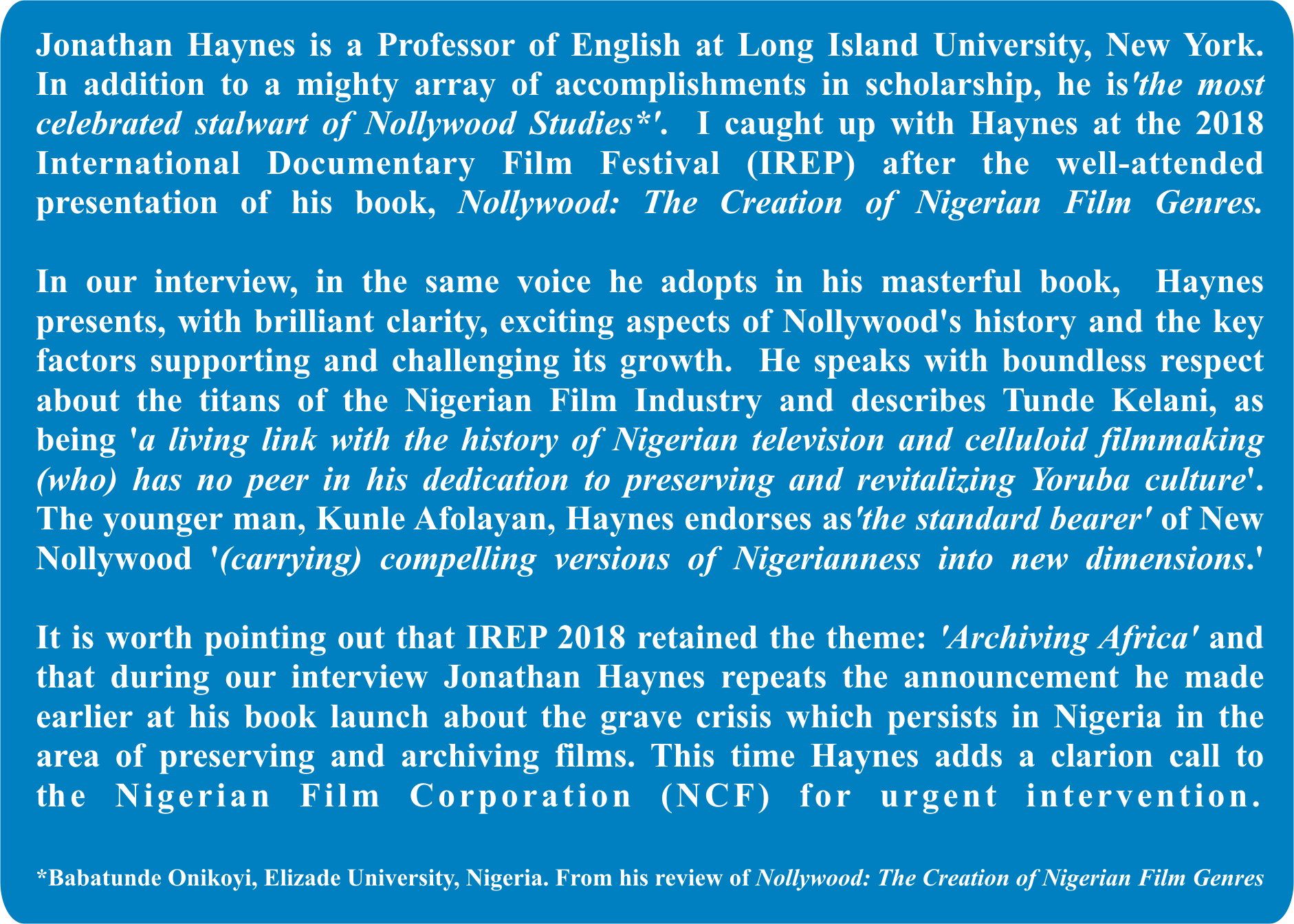

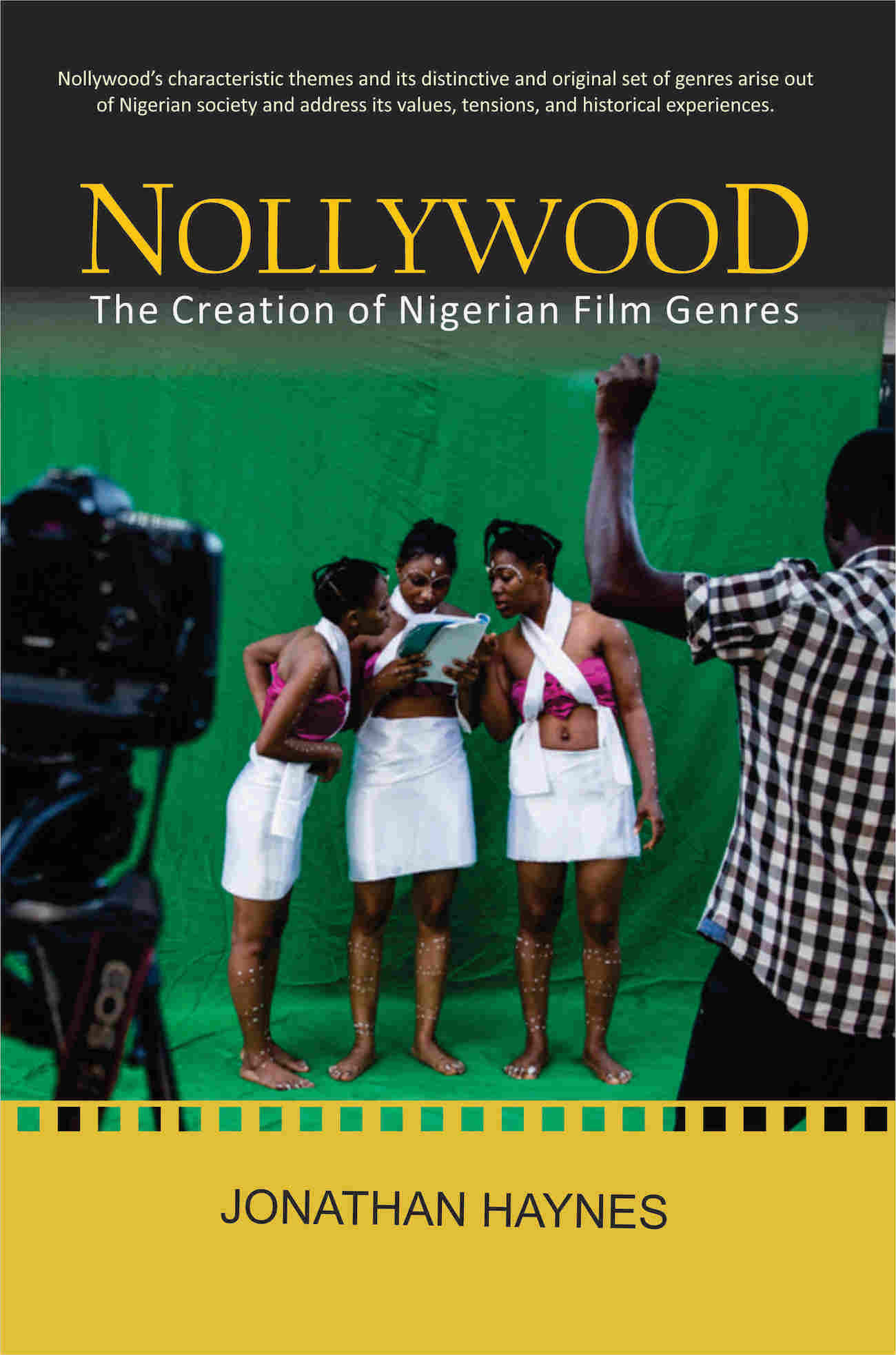
Your research into Nigerian Film started in 1991. Talk to us about this genesis. How and why and with which important collaborators, did it begin?
When I first arrived in Nigeria as a Fulbright lecturer in 1991, I had already begun writing about African cinema, but of the kind I’d seen at the FESPACO film festival. I’d never seen a Nigerian film. I was lucky to meet Onookome Okome, then a recent PhD in film studies (now an eminent professor in Canada), who drew me into the world of Nigerian film studies. He persuaded me to go to a workshop on film policy sponsored by the Nigerian Film Corporation in 1992, where I met many people, including Amaka Igwe and Zeb Ejiro, Baba Sala and Ade Love, Afolabi Adesanya and Hyginus Ekwuazi, whose book Film in Nigeria I had been poring over. This was a few months before Living in Bondage inaugurated Nollywood—the people I was meeting worked on celluloid film or in television. Nollywood interested me immediately as an expression of grassroots, popular culture, and as a true revolution in Africa’s relationship with cinema. It’s hard to remember how hard it used to be for Africans to see any kind of African film. I was very lucky to be a witness to the transition from one era of Nigerian media to another and to participate in establishing Nollywood studies as an academic field, which now has many hundreds of people in it, around the world. I’ll mention Okome again, for his strenuous efforts at organizing conferences over the years that have been immensely important in creating that academic community.

You describe Okechukwu (Okey) Ogunjiofor’s film, ‘Living in Bondage’ as the inaugural Nollywood film.
Tell us a little about the film. What makes it seminal in Nollywood?
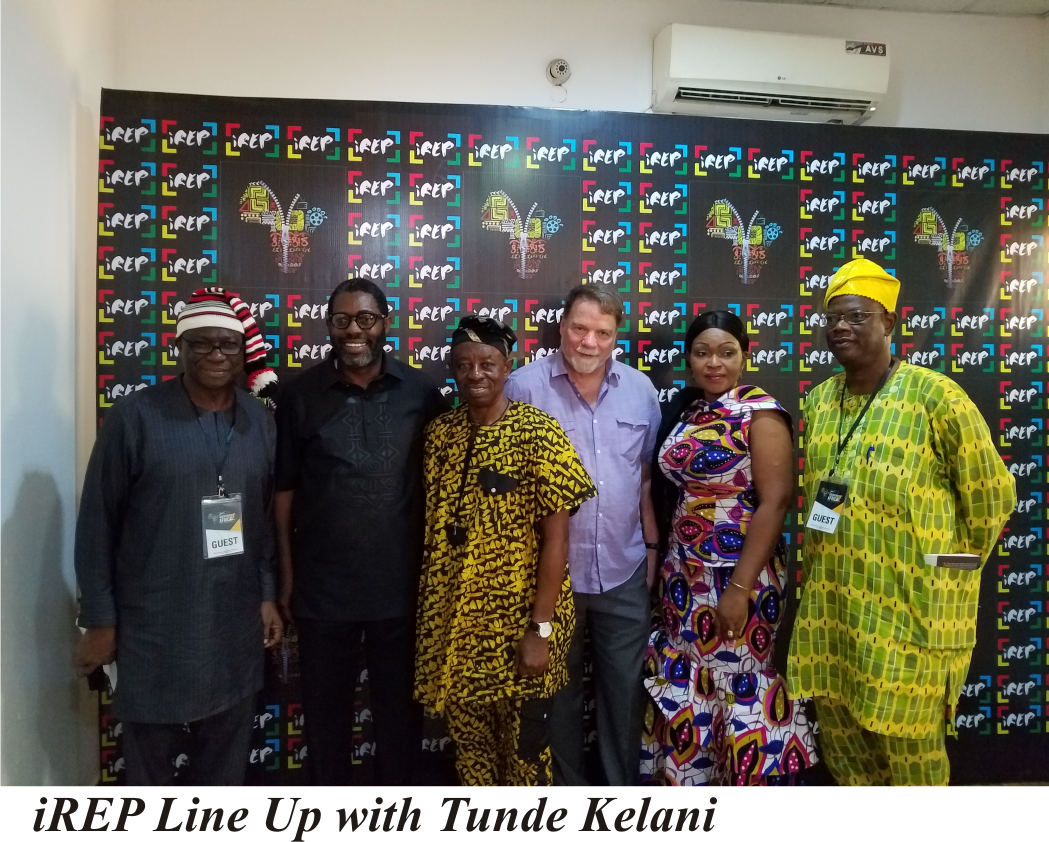 Living
in Bondage wasn’t the first Nigerian film on video, but it
“opened the market,†showing that a video-based industry was possible—and
potentially lucrative. It was the product of a collaboration between three men,
and I read their collaboration as a sort of allegory of the essential
constituents of Nollywood. Okey Ogunjiofor was a promising graduate of the NTA
Television College, whose television career was blocked by the SAP crisis; he
had the germ of the story, and saw that it would be possible to shoot it on
video. Chris Obi Rapu was the top director at the NTA, and was brought on board
for his experience and authority—the first of a large cohort of directors and
other personnel who came over from television and shaped the aesthetic of the
new form. Kenneth Nnebue provided the money and the business sense. He came out
of the informal sector, where he’d been selling cassettes of Hollywood,
Bollywood, and Chinese films—he was already an important figure in what Brian
Larkin has called the “infrastructure of piracy.†I also take Nnebue seriously
as an artist with a powerful social vision, which would be revealed
progressively in subsequent films.
Living
in Bondage wasn’t the first Nigerian film on video, but it
“opened the market,†showing that a video-based industry was possible—and
potentially lucrative. It was the product of a collaboration between three men,
and I read their collaboration as a sort of allegory of the essential
constituents of Nollywood. Okey Ogunjiofor was a promising graduate of the NTA
Television College, whose television career was blocked by the SAP crisis; he
had the germ of the story, and saw that it would be possible to shoot it on
video. Chris Obi Rapu was the top director at the NTA, and was brought on board
for his experience and authority—the first of a large cohort of directors and
other personnel who came over from television and shaped the aesthetic of the
new form. Kenneth Nnebue provided the money and the business sense. He came out
of the informal sector, where he’d been selling cassettes of Hollywood,
Bollywood, and Chinese films—he was already an important figure in what Brian
Larkin has called the “infrastructure of piracy.†I also take Nnebue seriously
as an artist with a powerful social vision, which would be revealed
progressively in subsequent films.
Living in Bondage was also important because it took the idiom of television soap operas and spliced into it the “money ritual†theme—something that previously had circulated as rumour, but couldn’t be shown on television. This marked the new form as “popular,†in the sense that it conveyed a grassroots, unofficial view of things.

Give us a window into the film genres you present in very interesting detail, in your book. How do we recognise the genres?
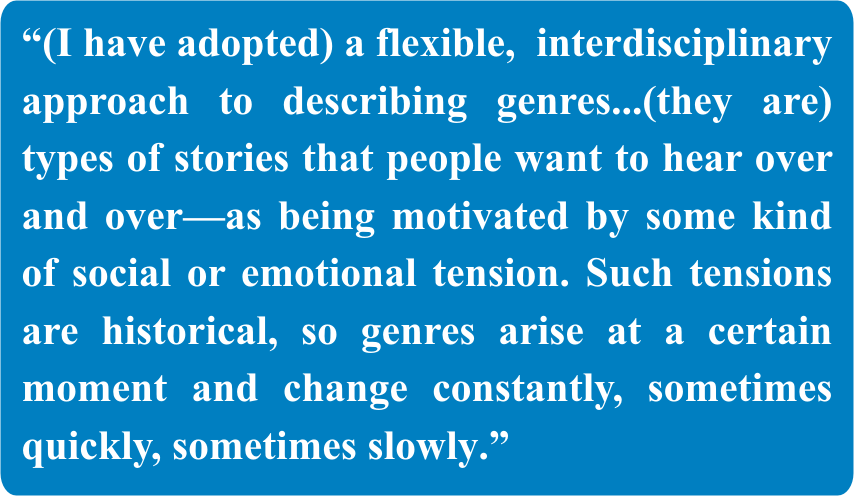 Each genre is a
collection of characteristics in various
Each genre is a
collection of characteristics in various 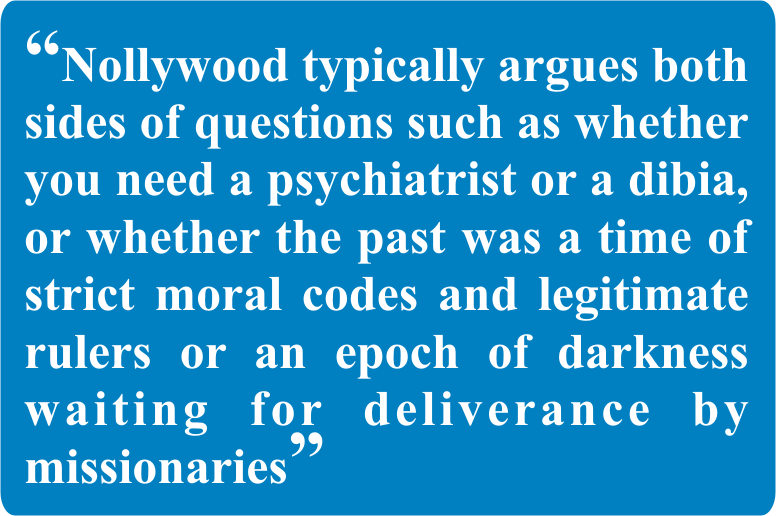 dimensions. Sometimes the visual
dimension is the most immediate and striking key to recognition, as with the
cultural epic, or the campus film, or the movies shot overseas; sometimes it’s
costumes, as with royal films or the vigilante films made in response to the
Bakassi Boys; or it could be the social setting, like the family films set in
middle class households; or the faces of actors associated with a genre, such
as the comedies of Osuofia or Mr. Ibu. For romantic comedies, it’s the plot
form. Narrative forms are what I’m most attuned to, which is probably related
to my training in literature, but I take a flexible, interdisciplinary approach
to describing genres. I understand genres—types of stories that people want to
hear over and over—as being motivated by some kind of social or emotional
tension. Such tensions are historical, so genres arise at a certain moment and
change constantly, sometimes quickly, sometimes slowly.
dimensions. Sometimes the visual
dimension is the most immediate and striking key to recognition, as with the
cultural epic, or the campus film, or the movies shot overseas; sometimes it’s
costumes, as with royal films or the vigilante films made in response to the
Bakassi Boys; or it could be the social setting, like the family films set in
middle class households; or the faces of actors associated with a genre, such
as the comedies of Osuofia or Mr. Ibu. For romantic comedies, it’s the plot
form. Narrative forms are what I’m most attuned to, which is probably related
to my training in literature, but I take a flexible, interdisciplinary approach
to describing genres. I understand genres—types of stories that people want to
hear over and over—as being motivated by some kind of social or emotional
tension. Such tensions are historical, so genres arise at a certain moment and
change constantly, sometimes quickly, sometimes slowly.

You write that, ‘the stories Nollywood tells...are mediated by the complex nature of the film industry itself.’
What do you mean by the 'complex nature' of the industry?
From the beginning, Nollywood was based on an uneasy collaboration between Surulere and Idumota—between the television-trained professionals often based in Surulere, who are mostly graduates and influenced by the culture and values promoted by the NTA and the universities, and the informal-sector marketers, who often have much less education but have been smart enough to build and control the market through their business skills and their acute sense for the stories people would want to see. Over time—and with the development of video technologies-- some marketers freed themselves from the expertise of the Surulere professionals and set up on their own, on the Asaba-Onitsha axis; and some of the film professionals now have business plans based on the multiplex cinemas and satellite and internet distribution—they may not bother with the disc market at all. One formation tells stories about women tying up the wombs of their daughters-in-laws, the other about the romantic tribulations of bank managers in Lekki. (Of course I’m simplifying everything to the point of caricature.) But the collaboration also continues, and it formed the heart of Nollywood film culture, so that Nollywood typically argues both sides of questions such as whether you need a psychiatrist or a dibia, or whether the past was a time of strict moral codes and legitimate rulers or an epoch of darkness waiting for deliverance by missionaries. This is what gives Nollywood its vitality as a forum in which pressing issues get expressed and debated. I link this duality historically to the nationalist political alliance between modernizers like Zik and Awolowo and traditional rulers—actually it goes even further back, to the British colonial policy of indirect rule in some places and direct administration in others, and it continues up to today. Nollywood is comfortable with contradictions, which is indispensable when representing this vast nation.
Obviously, there are ethnic and linguistic complexities too.

You talk about Nollywood’s business model being in a ‘perpetual crisis’.
Please identify a few of the challenges thwarting the development of the Nigerian Film Industry.
 Piracy has always been
the main problem, video being especially prone to unauthorized reproduction.
It’s the government that must address this problem, and it has never been
interested in doing so. Nigeria is also
Piracy has always been
the main problem, video being especially prone to unauthorized reproduction.
It’s the government that must address this problem, and it has never been
interested in doing so. Nigeria is also participating in the global volatility
in media business models. As Nollywood—or a sector of it-- becomes
progressively integrated into the global media economy, I think it’s very
important that everyone in the industry organizes to get contracts that give
them a continuing stake in their creations, rather than the flat fee payments
that made sense in the informal sector.
participating in the global volatility
in media business models. As Nollywood—or a sector of it-- becomes
progressively integrated into the global media economy, I think it’s very
important that everyone in the industry organizes to get contracts that give
them a continuing stake in their creations, rather than the flat fee payments
that made sense in the informal sector.

How successful are Nigerian films on the international film festival circuit? What can be done to improve their success rate?
Nollywood films don’t fit naturally into the international film festival circuit—they aren’t made to be art films, and international festival audiences will have a limited interest in low-budget commercial films from an unfamiliar culture. Given these obstacles, Nollywood hasn’t been doing badly. By now the film world has at least heard of Nollywood, and sometimes Nollywood really makes a splash, as at the 2016 Toronto International Film Festival, where eight Nigerian films were shown. I think it’s a mistake for Nigerian filmmakers to spend too much energy chasing after foreign recognition—they should make the best films the Nigerian market will support, and international fame will come when it comes.

In the book’s Preface, you write ‘...the basic character of the Lagos urban fabric (is) the same as the structure of the film industry’.
Could you shed light on this parallel which you draw?
In the first half of the Preface I try to show the ground that Nollywood springs from by describing Lagos—Surulere, mostly—highlighting infrastructural issues that shape the film industry. It occurred to me that the buildings of Lagos resemble Nollywood in that they are mostly individual, unregulated, small-scale initiatives in a modernist vernacular, with the occasional postmodern bank and clusters of older buildings that wouldn’t have been out of place in colonial Ibadan or Oshogbo.

You decry Nigeria’s recklessness with its history. How does this recklessness with our history impact Nollywood?
There’s a real crisis with the preservation of the films themselves. VHS tape and VCD discs are both unstable media that deteriorate rapidly, and nobody has amassed a comprehensive collection of Nollywood films, let alone digitized the films in a way that would preserve them. Nigeria’s important heritage on television and celluloid film sets a chilling precedent: much of it has been irretrievably lost, and no one seems to be serious about addressing the problem. In Nollywood, everybody is necessarily focused on making their next film and making money, and most Nollywood production companies are small and don’t have the resources to preserve their own productions. So there’s a serious problem with archiving. There’s another serious problem with availability. A reaction I’ve been getting to my book is, ok, you’ve convinced me that Glamour Girls is an important film, but how do I get to see it? And I don’t know what to say. Younger filmmakers have a hard time learning about their own tradition…. Millions of Nigerians have the history of Nollywood in their heads, but it needs to be saved for the future in permanent forms.

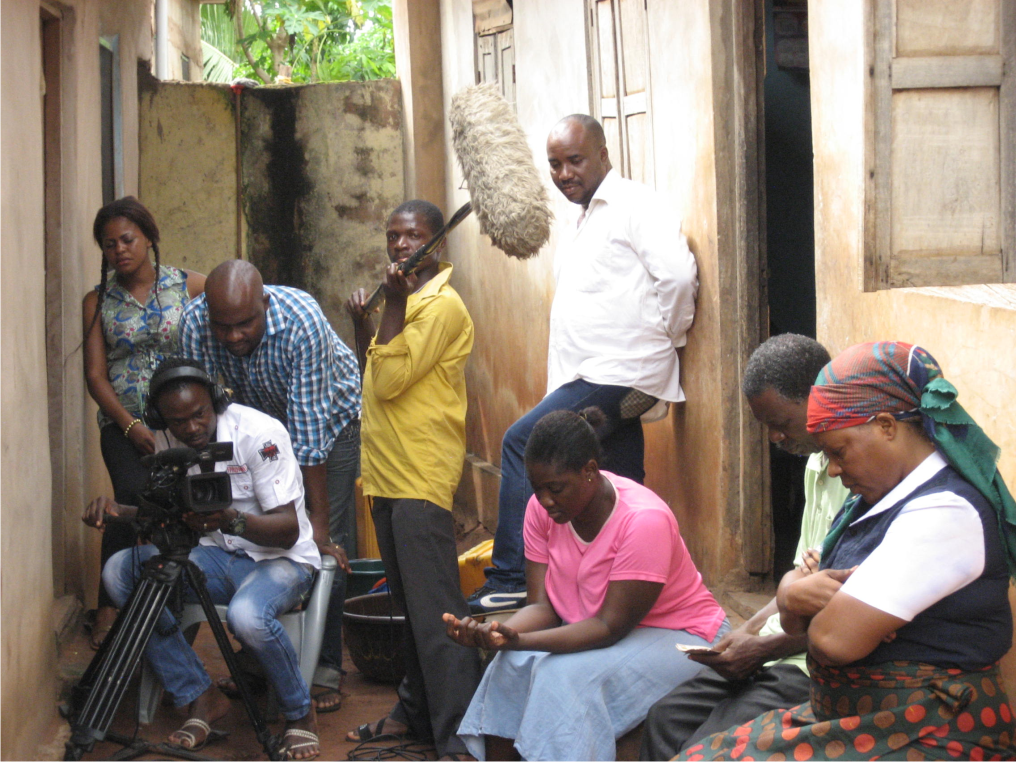 How was Nigeria able to
create one of the largest film
How was Nigeria able to
create one of the largest film 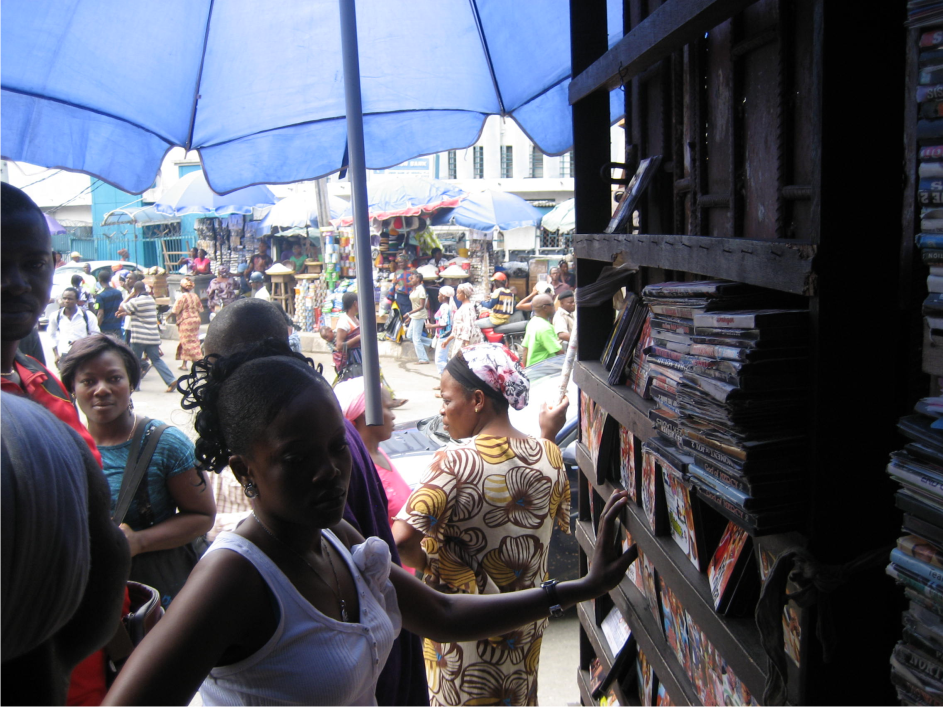 industries in the world in just a little over 20
years? (1992--2018)? What factors assisted its growth?
industries in the world in just a little over 20
years? (1992--2018)? What factors assisted its growth?
It’s a truly remarkable accomplishment. Video technology and the amazing Nigerian entrepreneurial spirit are the two main factors. The size of the country and consequently of the market for films is also crucial, as is the heritage of the NTA, which assembled a national, multicultural audience for audio-visual entertainment in English. The fact that Nollywood is predominantly in English helped it to spread abroad.

The Nigerian Film Corporation succeeded the British Colonial Film Unit.
 What is the NFC’s
mandate and in your opinion, how effective has it been in carrying out that
mandate?
What is the NFC’s
mandate and in your opinion, how effective has it been in carrying out that
mandate?
I think the Nigerian Film Institute is the most important accomplishment of the NFC—a number of excellent filmmakers have trained there. But it’s hard to pretend that the NFC has been particularly effective in relation to Nollywood. It should be taking the lead on the preservation issue, if nothing else. In 1992, I attended the official opening of the film archive facility in Jos, but it hasn’t preserved anything.

I have noticed that France is far more supportive of the film industries of its ex-colonies than Britain is of the film industries in her own former colonies.
Your thoughts on this discrepancy.
French support was responsible for the emergence of a whole branch of African filmmaking, and I love a lot of those films. But who wants the British around? When I first arrived in Nigeria I was coming from Francophone West Africa, and among the first things I found to like about Nigeria was it didn’t have the neo-colonial mentality that had been bothering me in those other countries. Of course it’s good if Nigerian filmmakers can access foreign, non-profit sources of funding, but Nollywood’s dependence on a Nigerian paying audience is key to its character.

Despite recognising that these films were incredibly condescending, you nevertheless talk about the importance of the legacy created by colonial films from Britain, France and Belgium.
Why do you consider the legacy of colonial films important to Africa?
Those films are more or less racist, and I wouldn’t want to overstate their importance. But they planted the idea that addressing the population with improving messages was a central aspect of cinema. This idea passed into Nigerian television, and from there into Nollywood. It’s gotten mixed up with the fundamental African idea that stories should carry a message, but occasionally it appears in something like its original form, as in the scene in Tunde Kelani’s Arugba where a health worker gives a little lecture on oral hydration therapy.

You dedicate an entire
chapter in the book to two notable film-makers from different generations: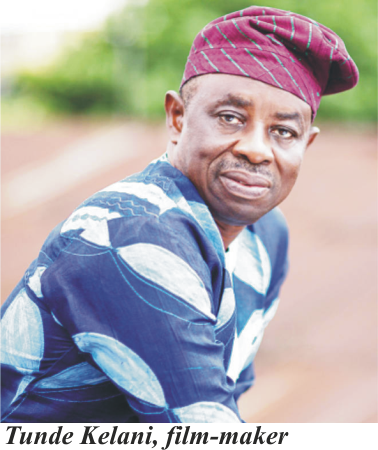
 Tunde Kelani and Kunle Afolayan.
Tunde Kelani and Kunle Afolayan.
Shed light on the contributions of each man: the older and the younger.
How do the two film makers compare and contrast in light of the New Nollywood with which Kunle Afolayan is so closely identified?
I believe Tunde Kelani and Kunle Afolayan are the two most important Nigerian filmmakers, and they are bound together by close personal ties. Tunde Kelani is a living link with the history of Nigerian television and celluloid filmmaking, and he has no peer in his dedication to preserving and revitalizing Yoruba culture or in the depth and breadth of the cultural resources that are integral to his filmmaking: literature and orature, music, dance, the visual arts, crafts, and so on. The man himself and his films express an unparalleled integrity and moral seriousness, without being solemn or pretentious in the least.
Kunle Afolayan is the
heir and crown prince of the Yoruba filmmaking tradition, but he expresses his
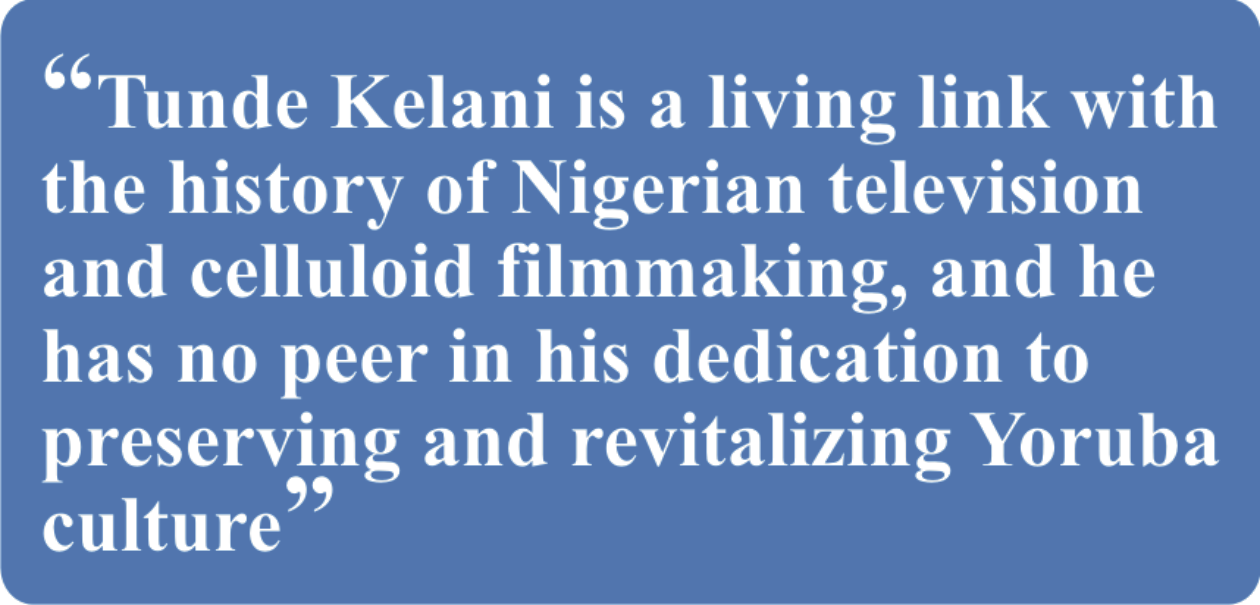 generation. Unlike Tunde Kelani, he’s as brilliant as
generation. Unlike Tunde Kelani, he’s as brilliant as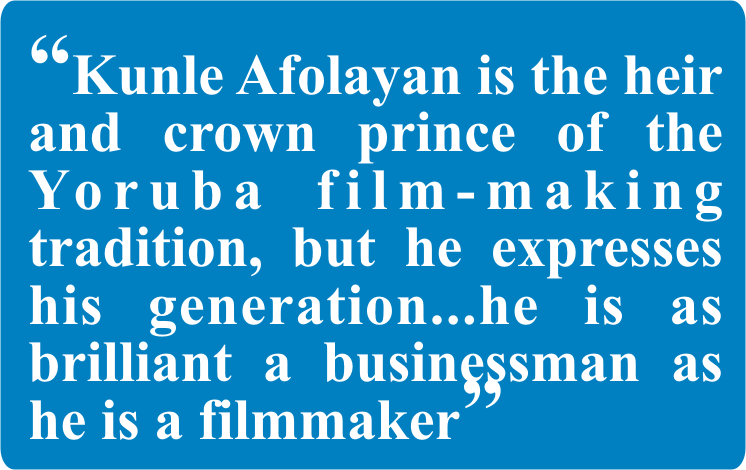 a businessman as he is as a
filmmaker. “New Nollywood,†of which he’s the standard bearer, was made
possible by the new multiplex cinemas, and the media environment has continued
to expand and diversify as satellite and internet corporations have become important
sponsors of media production and Nollywood is being integrated into the global
media system. Afolayan has been a nimble and creative pioneer in this new
terrain. He’s an excellent actor as well as a director and knows what to do
with his celebrity status. The audiences he addresses and the environments he
works in don’t encourage Kelani’s kind of rootedness, but Afolayan remembers
where he’s from and carries compelling versions of Nigerianness into new
dimensions.
a businessman as he is as a
filmmaker. “New Nollywood,†of which he’s the standard bearer, was made
possible by the new multiplex cinemas, and the media environment has continued
to expand and diversify as satellite and internet corporations have become important
sponsors of media production and Nollywood is being integrated into the global
media system. Afolayan has been a nimble and creative pioneer in this new
terrain. He’s an excellent actor as well as a director and knows what to do
with his celebrity status. The audiences he addresses and the environments he
works in don’t encourage Kelani’s kind of rootedness, but Afolayan remembers
where he’s from and carries compelling versions of Nigerianness into new
dimensions.

In 6 words what do you see as the future of Nollywood in the next 20 years?
Bigger, better, more
diversified, new talents! Click Here to get a copy
Thank you!
This Interview is published in Guardian Nigeria: https://guardian.ng/art/nollywood-is-an-expression-of-grassroots-popular-culture-a-true-revolution/
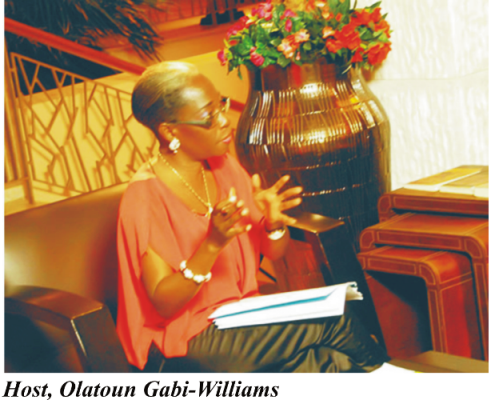
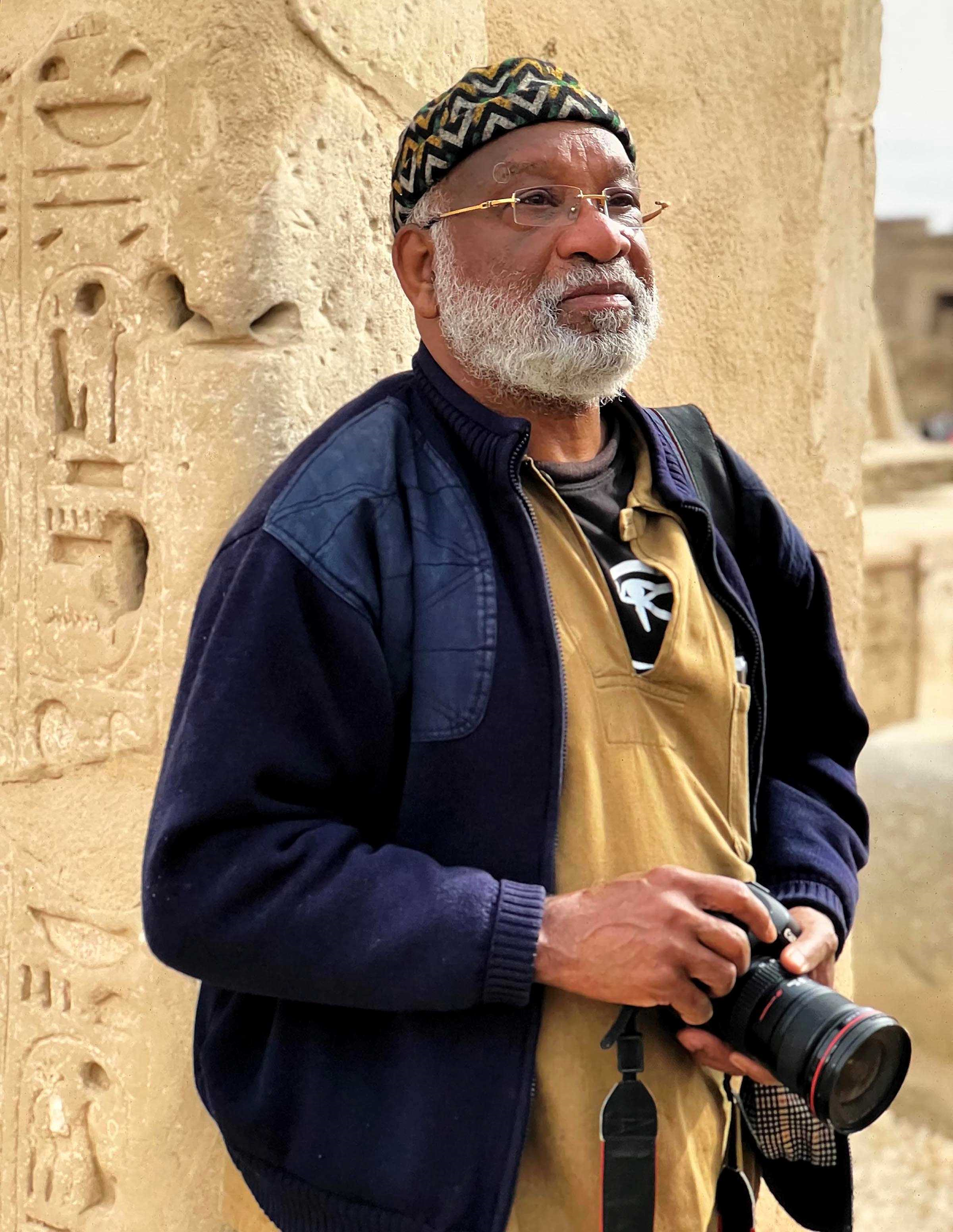
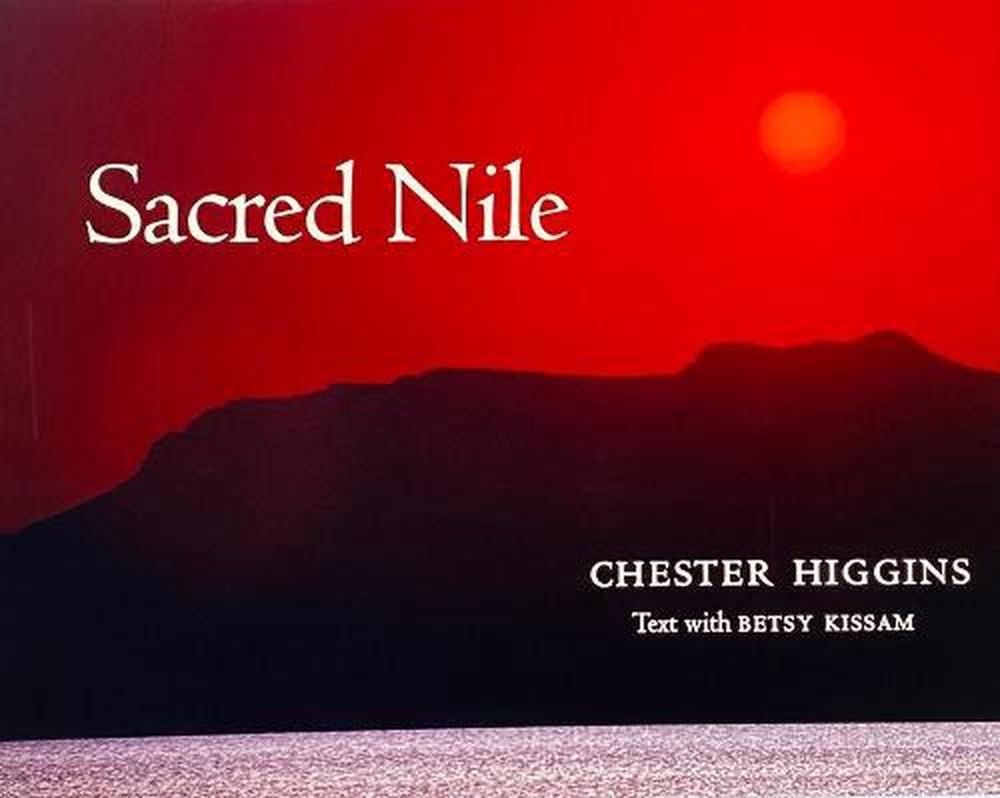
I am drawn to people of mixed-cultural descent and of mixed-race heritage. I'm also drawn to ...
David Aguilar, born in Andorra, is an inspiring figure known for his resilience and crea ...